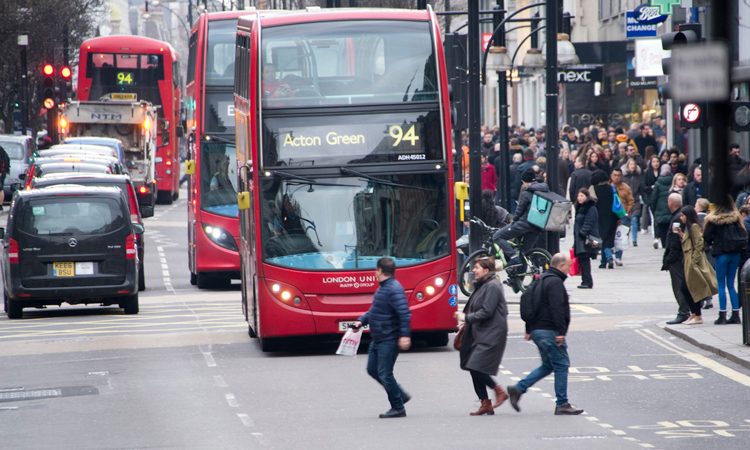Europe’s first comprehensive Bus Safety Standard puts automated tech to the test
- Like
- Digg
- Del
- Tumblr
- VKontakte
- Buffer
- Love This
- Odnoklassniki
- Meneame
- Blogger
- Amazon
- Yahoo Mail
- Gmail
- AOL
- Newsvine
- HackerNews
- Evernote
- MySpace
- Mail.ru
- Viadeo
- Line
- Comments
- Yummly
- SMS
- Viber
- Telegram
- Subscribe
- Skype
- Facebook Messenger
- Kakao
- LiveJournal
- Yammer
- Edgar
- Fintel
- Mix
- Instapaper
- Copy Link
Posted: 2 April 2019 | Alix Edwards - Transport Research Laboratory | No comments yet
The Mayor of London’s Road to Zero transport strategy set a firm target for buses to achieve zero road collision deaths in London by 2030. To ensure this challenge is met, Transport for London (TfL) commissioned the Transport Research Laboratory (TRL) to deliver a robust programme of research for a new Bus Safety Standard (BSS), which Alix Edwards, Vehicle Safety & Technology Consultant for TRL, details.


The Bus Safety Standard (BSS) has been developed as a safety-focused requirement for vehicle design and performance. The team, including engineering and human factors experts, evaluated a range of possible solutions culminating in 13 safety measures that include a review of existing regulations and bus technologies on the market. This was an evidence-based collaborative project, consulting with bus manufacturers and operators to make sure the safety measures will have a real contribution towards London’s ‘Vision Zero’.
As the world of transport moves towards electrification and a connected and automated future, it’s increasingly important for bus manufacturers to not only invest in new safety features, but also look ahead to developing innovative technologies that will help transform public transport, increase ridership and most importantly heighten safety.
The BSS is a safety-focused standard for vehicle design and system performance. All the research work has been centred on the amendment of TfL’s Bus Vehicle Specification, which is used in the bus contracting process. It prescribes what a London bus should look like, how it provides passenger capacity and supports user needs, meets emissions standards and a range of other engineering requirements.
Taking a holistic approach towards research, the BSS is Europe’s first comprehensive safety standard for buses. This robust programme of research extends the current specification for buses by providing performance-based test and assessment procedures, to encourage vehicle design changes that will deliver Vision Zero targets.
The safety measures
Comprehensive data from real-world injury collisions involving TfL buses was analysed and a range of countermeasures capable of both preventing future collisions, and mitigating the consequences in terms of injury severity should they occur, were identified.
Based on this evidence, TfL highlighted a number of safety measures of interest and asked TRL to carry out a full review of the regulations and existing bus technologies on the market for each safety measure. Throughout the process, TRL worked closely with bus manufacturers and operators to understand the technical feasibility of the safety measures. This has included partnering with them to create prototype solutions, which were used in the development of the test procedures, as well as increasing the overall understanding of the effectiveness of each safety measure.
The resulting procedures are outcome based, rather than specifying a particular system or supplier, meaning each is futureproof and supports future innovations.
The safety measures are:
Driver assist – helping the driver to avoid or mitigate the severity of incidents
Advanced emergency braking (AEB) systems utilise sensors such as LiDAR, radar, camera or fusions of data from more than one sensor to identify the risk of an imminent collision. AEB will brake only if an emergency arises and the driver is not able to take control. Already widely fitted on HGVs and cars, considerable attention has been given to modelling the balance between collision avoidance and the risk of injury to both seated and standing passengers onboard. This includes consideration of preventing vulnerable road user (VRU) injuries, the casualty savings amongst passengers onboard if a collision is averted, and the risk of potential additional injuries resulting from false activations of the system. New bespoke test procedures have been developed to minimise the likelihood of trauma from a false activation of the system.
Intelligent speed assistance (ISA) is based on a digital speed limit map of London. The system interprets the speed limits for the bus position and prevents the driver from accelerating above them.
Improved direct and indirect vision involves an assessment of the area around the bus that can be seen by the driver. Improvements are achieved by better direct (eye-line) vision through windows, indirect vision via the use of mirrors, or blind-spot information systems and camera monitor systems (CMS) in the future.
Pedal application error uses a variety of measures to help a driver prevent or recover from an unidentified acceleration incident, where they have pressed the accelerator pedal instead of the brake.
Runaway bus prevention is a system of interlocks to stop the bus from rolling away if exceptional circumstances lead to the driver forgetting to apply the parking brake when leaving the seat. Based on task analysis workshops with drivers, human factors experts at TRL have generated a new checklist to govern the system’s performance.
Partner assist – helping other road users involved to avoid a collision
Acoustic vehicle alerting system (AVAS) has been reviewed so that a quiet running (e.g. electric) bus is as noticeable as a standard diesel bus, to help pedestrians and cyclists detect its presence. In addition, visibility has been assessed to help vulnerable road users detect the presence of a bus and the collision risk it represents before starting to cross the road. For both measures, TRL has developed evaluation procedures in order to identify which solutions are most effective in reducing casualties.
Partner protection – reducing the severity of injuries for road users outside the bus in a collision
This includes a review of the front-end design of a bus, such as impact protection, energy absorption, and run over prevention measures. It also covers the impact performance of wing mirrors and their potential replacement with a camera monitor system (CMS). Test procedures have involved both simulations and head form impacts on the front of buses.
Occupant protection – reducing the severity of injuries for people onboard the bus
The BSS assessed the protection provided for passengers, including a visual inspection of the interior to design out potentially injurious features and encourage better positioning and selection of features. Research has evaluated whether higher back seats may be of benefit in the event of an impact, with simulations and physical seat testing providing new evidence. However, further research is needed in this area to develop robust and practicable seat design performance standards and testing of anti-slip flooring.


The next steps
Launched on 16 October 2018, the BSS marks a gear shift in the approach to safety for London’s buses. The BSS will be a rolling programme, meaning this research is just the starting point. Testing and trials will continue to investigate the capability of new technologies and bus features. The specifications will be updated regularly to extend the preventative and protective benefits of both present and future safety measures.
To take the BSS into its next chapter, there is now a roadmap to provide a guide for future developments. The roadmap is a key tool for bus manufacturers and operators in understanding TfL’s requirements, and will enable them to plan for the future. The BSS roadmap will present a ‘preferred’ date earlier than the ‘required’ date, to reflect the anticipated first to market and leaders of the technologies to encourage the earlier adoption of safety systems.
There are many more safety features that could be implemented on buses and new innovations yet to come. TRL has championed the in-depth research behind the BSS and will continue to strive toward greater safety on buses by working with manufacturers and operators in developing cost-effective and state-of-the-art solutions based on an evidence-led approach.
To support this process TfL has set the bus industry an Innovation Challenge. The Innovation Challenge opened in early 2019 to deliver evidence to show the effectiveness of these new innovations.
Overall, the two companies will work to see these standards adopted by other cities and countries in order to help achieve the government’s Vision Zero strategy for buses around the globe.
Biography


Related topics
Fleet Management & Maintenance, Transport Governance & Policy, Vehicle & Passenger Safety
Related modes
Bus & Coach
Related cities
United Kingdom
Related organisations
Transport for London (TfL), Transport Research Laboratory (TRL)
Related people
Alix Edwards, Richard Cuerden








